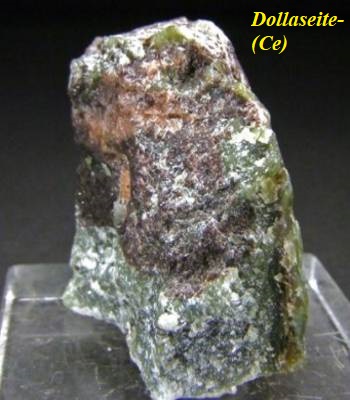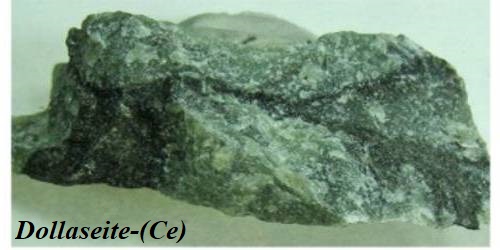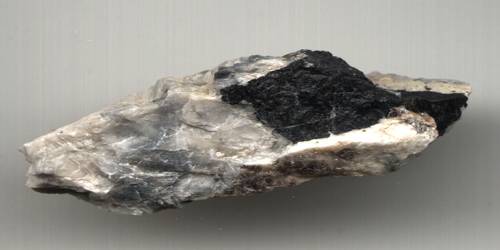Dollaseite-(Ce) is an epidote found in metamorphosed limes times and is very rare. It is a sorosilicate end-member epidote mineral and was discovered by Gajer (1927) in the Ostanmossa mine, Norberg district, Sweden, the mineral wrongly named “magnesium orthite” after Gajer (1927) himself was renamed after the structure refinement made to the mineral by Peacor and Dunn (1988) led to the proper classification.
The name dollaseite-(Ce) was chosen in honor of Professor Wayne Dollase, who performed broad research on the epidote-group minerals
General Information
- Category: Silicate mineral
- Formula: CaCeMg2AlSi3O11F(OH)
- Crystal system: Monoclinic
- Crystal class: Prismatic (2/m) (same H-M symbol)

Properties
Dollaseite-(Ce) can generally be found in mineralized dolomite-tremolite rocks in the form of dark brown and subhedral crystals. Dollaseite-(Ce), although not very well known is part of a broad group of minerals, the epidote group which is primarily silicates, the most abundant type of minerals on earth. It forms as dark-brown subhedral crystals primarily in Sweden mines.
- Formula mass: 551.04 g/mol
- Color: Brown
- Crystal habit: Massive, somewhat prismatic, equant when subhedral
- Fracture: Flat regular to uneven
- Mohs scale hardness: 6.5–7
- Luster: Vitreous
- Streak: light brown
- Diaphaneity: Translucent
- Specific gravity: 3.9
Occurrence
Dollaseite-(Ce) can occur in a number of locations, but the most prominent is at Ostanmossa, Sweden. The type of dollaseite-(Ce) that can generally be found at this location tends to be Fe-poor and occurs in tremolite skarn. The fact that, it can be prominently found in Sweden comes as no surprise since Sweden has been known to host many REE epidote-group minerals such as dissakisite-(Ce) and allanite-(Ce).
Information Source:
















